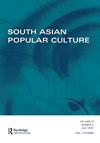重塑斯里兰卡电影中的女性身体:28岁和Asandhimitta重访
IF 0.3
0 ASIAN STUDIES
引用次数: 0
摘要
摘要本文对斯里兰卡两部电影中的女性主角进行了比较解读,重点关注女性身体如何成为性别暴力的争议场所,受到国家和男性的监视和遏制。本文通过对Prasanna Jayakody的《28》(2014)和Asoka Handagama的《Asandhimitta》(2019)的深入分析,试图揭示斯里兰卡电影如何暴力地将女性身体重新塑造为表达受害者身份和欲望的谈判场所,并成为女性主义问题的潜在铭文空间。本文章由计算机程序翻译,如有差异,请以英文原文为准。
Reframing female bodies in Sri Lankan cinema: 28 and Asandhimitta revisited
ABSTRACT The paper provides a comparative reading of the female protagonists in two Sri Lankan films, focusing on how the female body becomes a contentious site of gendered violence, subject to state and male surveillance and containment. Through a close analysis of Prasanna Jayakody’s 28 (2014) and Asoka Handagama’s Asandhimitta (2019), this paper attempts to reveal how Sri Lankan cinema violently reconfigures the female body as a site of negotiation for articulation of victimhood and desire and becomes a potential space for the inscription of feminist issues.
求助全文
通过发布文献求助,成功后即可免费获取论文全文。
去求助
来源期刊

South Asian Popular Culture
Arts and Humanities-Visual Arts and Performing Arts
CiteScore
1.00
自引率
0.00%
发文量
29
 求助内容:
求助内容: 应助结果提醒方式:
应助结果提醒方式:


